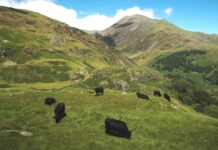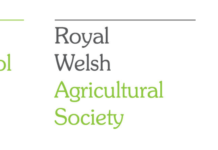Beef farmers whose grass silage analyses are in the top 25% in Wales can capture daily liveweight gains 400g/head higher than animals fed the same quantity of average quality forage, equating to a cost benefit of £24/head/month.
For dairy farms in that top band of silage makers in Wales, there is a 2.2 litres milk/cow/day advantage.
Data from nearly 2,000 grass silage samples funded through Farming Connect between 2015-2020 highlights the importance of producing the best possible silage to reduce feeding costs and increase productivity.
Dr Dave Davies, of Silage Solutions, who examined the data on behalf of Farming Connect, said it showed that the top silage makers were consistently producing substantially better forage than the average.
The top 25% quality samples had an ME of 11.39 MJ/kg DM and a crude protein of 157g/kg DM whilst for the average the ME was 10.17 MJ/kg DM and the crude protein 126g/kg DM.
By targeting an ME of 11.5MJ/kg DM and a crude protein of 170g/kg DM, silage alone can provide most, if not all, the nutrient requirements for beef cattle and pregnant ewes, advises Dr Davies.
These benefits have implications for the time fattening cattle spend on farm – three days per animal less which, for 50 head of cattle, adds up to 150 days.
Considerable savings can be made on bought-in protein when silage quality is higher, the data shows.
For beef, an additional 0.305kg/head/day would need to be fed to supplement silage in the average category; for dairy it would be 0.457kg/head/day more.
Based on 300t silage DM, the top 25% of silages sampled in the last five years have an additional protein availability of 9.15t and an extra 360,000 megajoules of metabolisable energy compared to the samples in the average category.
For beef producers that translates to an increase in liveweight of 12,000kg and for dairy farmers 67,925 litres more milk.
To produce this additional output with poorer quality silage would require 45.75 tonnes of 20% protein supplement, Dr Davies calculates.
There are also important environmental advantages in producing higher quality silage.
Methane produced from livestock consuming silage in that top 25% is considerably lower – 1.1 million litres less per farm based on 300 tonnes (t) dry matter (DM) fed.
“The poorer the digestibility (D value), the more methane generated upon consumption of feed,” said Dr Davies.
“When considering methane emissions/kg of human consumed meat or milk, better quality silage has a significant role to play in reducing overall greenhouse gas emissions.”
The data also highlighted a widening of the time period that silage is now made – samples were analysed from silage cut as early as February 10 and as late as December 18, with some farmers producing six crops.
“Silage production has become much less seasonal than it was 10-15 years ago,” said Dr Davies.
Reasons, he believed, included continued grass growth in the autumn and winter period due to changing weather patterns, improved grass varieties and some dairy farms housing animals for longer periods.
Dewi Hughes, Technical Manager at Farming Connect, says the report highlights the importance of producing the best possible silage, to reduce feeding costs and increase productivity.
Farming Connect works with farmers across Wales. For more information on the services available, please visit the Farming Connect website or get in touch with your local development officer.
Farming Connect, which is delivered by Menter a Busnes and Lantra, has received funding through the Welsh Government Rural Communities – Rural Development Programme 2014-2020, which is funded by the European Agricultural Fund for Rural Development and the Welsh Government.
Help keep news FREE for our readers
Supporting your local community newspaper/online news outlet is crucial now more than ever. If you believe in independent journalism, then consider making a valuable contribution by making a one-time or monthly donation. We operate in rural areas where providing unbiased news can be challenging. Read More About Supporting The West Wales Chronicle


























